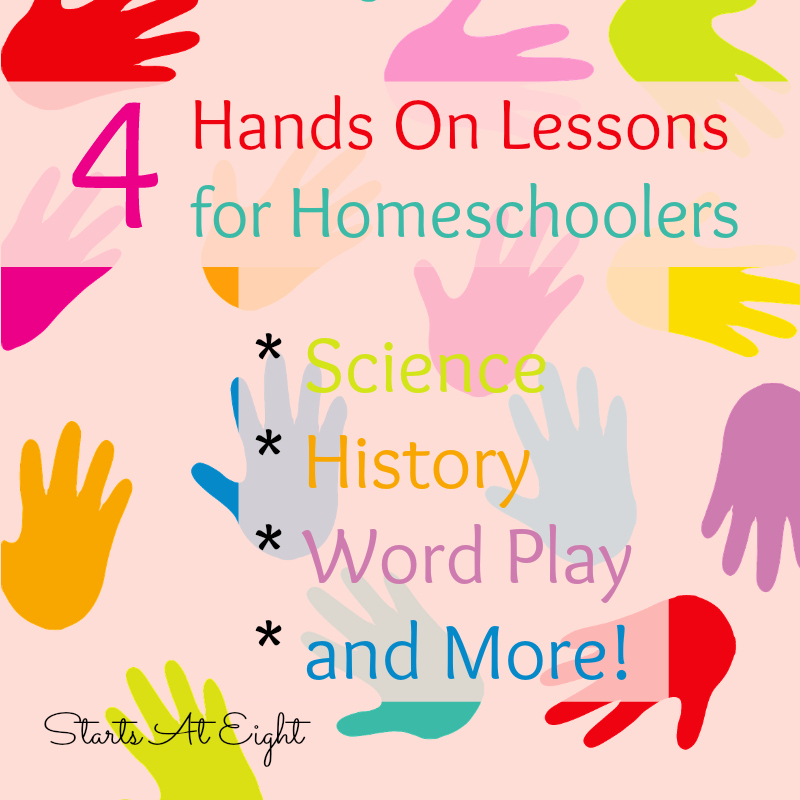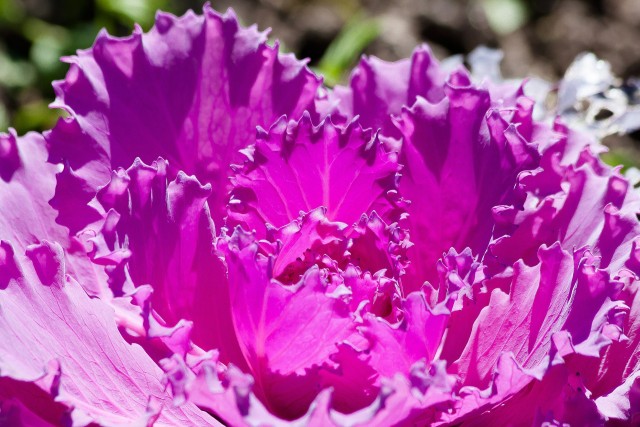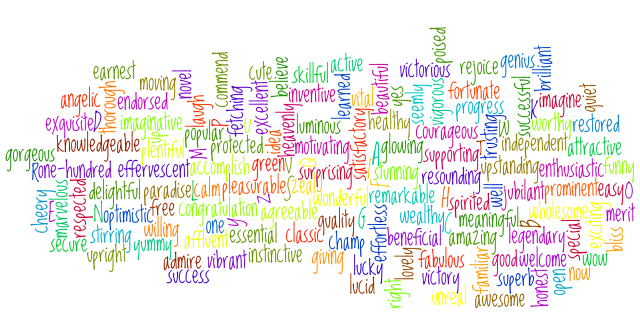4 Hands On Lessons for Homeschoolers
Often the best way to learn something is my getting your hands on it. Homeschooling offers us a unique opportunity to be able to offer our kids not only more hands on lessons, but more in depth ones and in a wider breadth of subjects.

Samantha Cleaver’s Scholastic article explores the many ways in which kids who are hands-on are minds-on. If you’ve ever watched toddlers and preschoolers play, you can see them manipulate objects and try to figure out how they work and what they do, and some even take things apart to learn more about them. Dr. Ben Mardell, a Project Zero researcher at Harvard, says, “Kids learn through all their senses, and they like to touch and manipulate things.”
Elementary students are the same, as the right side of the brain develops and learns through visual and spatial activities from ages four to seven, while the analytical/language left side of the brain does not develop until age 10 or 11. Because different parts of the brain do different things, combining activities that are hands-on and require talking and listening activates several brain areas and helps kids retain information, because they are making more connections to the brain.
4 Hands On Lessons for Homeschoolers
It’s one thing to know kids should do hands-on activities, but it’s another thing to design quality hands-on lessons. I think these hands-on lesson plans are great for homeschoolers, and I hope they’ll inspire you to create some of your own.
1. Cabbage Color Chemistry

Getting kids involved in science lessons that are hands-on makes the concepts come to life for them. One hands-on lesson that gets kids actively involved is Cabbage Color Chemistry. Please note, adults should do the following first: 1. Grate a small red cabbage and place it into a large bowl or pot; 2. Pour boiling water to cover the cabbage and allow the mixture to steep, stirring occasionally, until the liquid is room temperature; 3. Place a strainer over a second bowl or pot, and pour the mixture through the strainer to remove the cabbage pulp. Then, have students take turns pressing down on the pulp in the strainer with a large spoon to squeeze out more liquid. The solution in the bowl is your indicator solution.
Students should record the color of the indicator solution in a science journal. Use pH testing strips to determine the pH of the solution. Fill small paper cups about half way with your indicator solution. Then, ask students to squeeze drops of lemon juice, Sprite or Sierra Mist, and other liquids they would like to test into the small cups. Be sure they stir the solutions before they test them. Students should record the observed color changes and pH of each new solution. Then, they should compare results to see which solutions are similar and determine the reason.
2. Guess the U.S Historical Figure

I came up with this game recently when my oldest was having trouble with her social studies lessons. She just wasn’t engaged enough to digest the information she was being given. So, inspired by some online games I’d seen, I created a game that I thought would help her become more immersed in her history lessons. Armed with some facts about important U.S. historical figures and a box of costume pieces I’d scrounged together from an online party store’s clearance section, past Halloween costumes, and our local Goodwill, I gathered my daughter and a few of her friends in the living room to play “Guess the U.S. Historical Figure.”
Here’s how it works:
Divide your pool of players into two teams. A player from one team is given the name of a historical figure. They have 30 seconds to pull costume items from the box to dress up as that figure. Once their 30 seconds is up their team tries to guess who they are. If their team gets it right, they get a point. If they get it wrong, the other team gets a chance to guess. We played until a team reached 10 points, but you can go on as long as the players are interested. In between rounds, we would talk a little about the achievements of the historical figure who had been featured in the previous round. My daughter and her friends had a great time dressing up, and I think they all came away with a better understanding of the historical figures that had been featured in the game.
3. Word Sorts

Whether you are teaching vocabulary, spelling, or word families, Word Sorts can be used for nearly any school subject. You can make the sort as simple or as challenging as you want, depending on the objective of the lesson. Generally, you should have categories that students can place the words into independently or with partners. For example, you may ask kids to sort words by fact or opinion, vowel sounds, prepositions versus non-prepositions, etc. The possibilities of words sorts are endless.
4. Have a Dog Day

Most kids love learning about animals, and it can be especially easy to pique their interest when dogs are the topic of discussion. Many have dogs as pets, and it’s likely they view their four-legged pals as members of their family. Organizations from the American Veterinary Medical Association to the American Kennel Club to the International Fund for Animal Welfare and more offer dog-focused lessons to help kids learn more about animal behavior, how to interact safely with animals, how to care for animals, animals in history, and so on. If you’re ever looking for a fun lesson to spice things up one afternoon, a lesson about our furry friends could be a great option.
Getting kids actively engaged in their learning with hands-on lesson plans is beneficial for a variety of reasons, as they make more connections to the concepts and have a better chance of moving the material from short-term to long-term memory. It’s also nice to do hands-on activities because students see it as playing and having fun, while you know they are learning.
Author Bio: Jamie Strand is a former homeschool kid and unashamed science nerd. He’s a community college professor and proud father of two daughters who wants to inspire a passion for science and math in today’s young people. That goal drove him to start SciCamps.org with help from a good friend. When he isn’t teaching, Jamie can often be found digging for fossils in the backyard with his daughters, exploring the local nature preserve, or binge watching Star Trek reruns.


